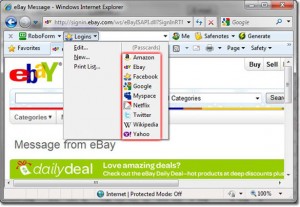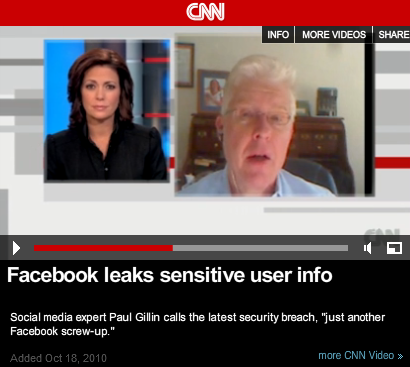The Other Social Network
Have you checked out LinkedIn lately? If you thought the world’s largest professional network was little more than a place to post your resume, you owe yourself another visit. LinkedIn is set to eclipse the 100 million member mark sometime this sprin g, and it is quickly becoming the social network of choice for B2B professionals.
g, and it is quickly becoming the social network of choice for B2B professionals.
LinkedIn gets none of the buzz of Facebook, and no one’s going to make a movie about it. Its format is austere, it has few third-party applications and it doesn’t support chat, photo libraries or videos. What it does have is lots of members who talk about serious professional issues, and some of its groups are becoming massive in scale. For business pros in industries like communications, manufacturing, retailing, financial services and even construction, LinkedIn groups are becoming vertical social networks in their own right.
This is the ideal B2B environment. There’s very little waste because members are there to seek professional opportunities, ask and answer questions and network with their peers. Spamming isn’t a problem, particularly in the moderated groups, and there’s none of the frat boy histrionics that you find on Facebook. It’s not surprising that in research conducted by B2B magazine last spring, marketers picked LinkedIn as their social network of choice by a substantial margin over Facebook.
LinkedIn has evolved far beyond its roots as a professional networking service. It hosts active groups for finance managers, telecom professionals, people in the construction industry, real estate pros, HR managers, pharmaceutical workers and film professionals. And those are just the ones with more than 40,000 members. If you’re in the hospitality industry, there are nearly 1,000 members in The Hospitality Forum. A group for medical doctors has more than 2,600 members. Stephanie Sammons posted some great tips on Social Media Examiner early this year about how to make the most of LinkedIn groups.
And those groups are busy. Someone asked the Sales Best Practices group a couple of months ago “What is YOUR Best Sales Advice — 20 words or less.” It has 532 responses. A recent discussion in the Cloud Computing, VMware, Virtualization and Enterprise 2.0 Group about whether IT organizations will start discarding their assets has more than 460 responses. Some LinkedIn members answer 300 or more questions every week.
It’s not about the numbers, though. In fact, many LinkedIn groups are kept intentionally small by administrators who want to maintain member quality. Just try to get into CIO Forum. Unless you’re an IT manager, you probably can’t. Facebook is about mass, but LinkedIn is about focus, which is one reason it rocks for B2B.
Here are a six ways B2B marketers can leverage LinkedIn for prospecting and promotion:
Ask and Answer. Many of the questions posed within groups and in LinkedIn’s busy Answers section concern requests for expertise. You can subscribe to questions in your domain using an RSS reader, which ensures that you will never miss one that matters to you. If the technical gurus in your organization are intimidated by the prospect of blogging, urge them instead to answer five questions per week. As they grow their profile in the community, people will start seeking them out for business. That’s the reason Vico Software expects its sales reps to become active in construction-related groups in each of their territories. The company expects their reps will have a better chance of getting a lead on new construction opportunities there than by waiting for RFPs to come in.
Choose Open Groups. LinkedIn recently gave group owners the option of making their content public so that all activity from that point on would be visible to search engines. This is a good way to make your groups more visible. Also, if you plan to post regularly to groups in your field or industry, consider choosing open groups so that you get the additional Google love.
Promote in Groups. Cross-post new entries from the company blog or new presentations on SlideShare to appropriate groups of which you’re a member. Summarize your content and ask a question. Use a unique URL so you can track activity. You’ll often be surprised at the volume of response.
Use Company Profiles for Prospecting. LinkedIn has a unique approach to company profiles. They’re organized by the people who work there. Salespeople who are having trouble finding the right contacts in an organization can use these profiles as a virtual back door. LinkedIn shows you who works at the company and whether you have direct or indirect ways of contacting them. You might be able to do the same thing on Facebook, but it’s a lot more difficult.
Find People. One of LinkedIn’s great strengths is the choices it gives you for selecting members. You can filter by title, geography, group membership, company size and even years of experience. Some members reveal remarkably detailed public profiles of themselves. You can use this information to prepare for a meeting, find skills or identify prospects within a region. When I need to recruit speakers for a panel in Atlanta, for example, the first place I go is my LinkedIn contact list because I can so quickly identify prospects in the area.
Use LinkedIn Signal. One of LinkedIn’s little-known gems is Signal, a real-time search engine that’s listed as “Updates” on the search menu. Use it to monitor what people are saying about any topic. You can also filter by connection, date, company and industry. A search for “Chicago Marketing Jobs” returns 20 opportunities posted in the last 72 hours. You can also get updates on people and groups that interest you.
LinkedIn has recently revealed some visually cool and potentially very useful stuff coming out of its labs. Swarm (below) is a different take on tag clouds that builds on recent company and title searches, jobs posted, blog entries and shared articles. InMaps lets you visualize your connection network. It’s still early-stage but shows promise.
What’s your favorite LinkedIn feature? Do you have a success story to share? Post it here.

Recent Scribblings and Podcasts
- Michelle Davidson and I had a great talk about B2B social media marketing for her Rain Today podcast. I made the case why marketers need to think like publishers and produce high-quality editorial content in order to be noticed.
- Eric Schwartzman and I continued on that theme in our most recent B2B social media podcast. The catalyst for the discussion is a new report that says content marketing is growing in importance, but that marketers are still struggling with creative issues.
- I got involved in a spirited little debate on The CMO Site over the value of Twitter for B2B marketing. I listed a bunch of statistics and case studies that I believe make a pretty compelling case for an ROI on tweets. Not everyone agreed with me.
- I continue to work through a backlog of questions from the recent webinar that Eric and I did with Marketo. My answers cover topics like the appropriate use of personal versus corporate Twitter accounts, how to generate traffic to your blog and the value of e-mail marketing campaigns in the age of social media (still very important). The first set of answers is here and the latest batch is here. You can also listen to the original webinar here. Marketo called it “one of our most successful webinars to date.”
- Who says engineers don’t know how to have fun? The folks at electronics distributor Element14 certainly don’t. They’ve got a new series of videos that focus on engineers’ passion for tinkering, and it’s inspired more than 1 million views in the last six months.
Tip of the Week: Delicious Linkrolls
You might look at a page like this one or this one and think, “Wow, that must have been a lot of work!” But as my wife says, “Really not so much.” The hundreds of articles and links on those pages are actually generated automatically by the social bookmarking site Delicious using a feature called “linkrolls.”
Linkrolls are collections of bookmarks that publish automatically to any compatible website using a small piece of Javascript code. Once you set up the code, everything you bookmark to the Delicious site with the designated tag will automatically appear on any page containing the code. You can publish headlines and full descriptions and publish them either alphabetically or in reverse chronological order.
Linkrolls have been around for a long time, but I’m surprised how few people have heard of them. They’re a great way to keep a running list of webpages that are important to you and to easily share them with others on your own site. Now that Yahoo has declared its intention to sell or shut down Delicious, some people are saying that the age of bookmarks is over, but I still find them enormously useful in keeping track of important information, as well as publishing it on occasion.
Just for Fun: Instructables.com
Want to know how to make a Yoda cake like the one below? Or how to iron seven shirts in 15 minutes? Or perhaps how to embed a bluetooth headset in a glove so you can literally talk to your hand? Then pay a visit to Instructables.com, where people have shared thousands of step-by-step instructions on how to build more offbeat, bizarre and occasionally even useful projects than you ever imagined.
Instructables.com started as a project at the MIT Media Lab, where researchers used it to share their projects and help others. It’s since evolved into a massive crowd-sourced venture for tinkerers. Some of the instructions are of questionable value (how build snowshoes from a computer case?), but a lot of them are downright useful (how to bake a perfect pecan pie). Use it to satisfy your inner tinkerer.
=





 She would do no such thing. CareOne actually takes a disciplined approach to figuring ROI, she said, using control groups and thousands of data points. Not only do community members convert at dramatically higher rates, but the boost in sign-ups is only one of several business benefits CareOne has realized from its customer community. But more on that in a minute.
She would do no such thing. CareOne actually takes a disciplined approach to figuring ROI, she said, using control groups and thousands of data points. Not only do community members convert at dramatically higher rates, but the boost in sign-ups is only one of several business benefits CareOne has realized from its customer community. But more on that in a minute. CareOne is focusing on the right stuff. The section headlined “CareOne + Social Media: The Measurement” on the
CareOne is focusing on the right stuff. The section headlined “CareOne + Social Media: The Measurement” on the 
 With Nimble, you can import your address book, Facebook and LinkedIn contacts into a single record and associate people’s activities in those networks – as well as Twitter and your inbox – in a single place. So if you’re making a call on a prospect or customer, you can quickly consult the personal or company record to find out what’s been happening in their lives or careers.
With Nimble, you can import your address book, Facebook and LinkedIn contacts into a single record and associate people’s activities in those networks – as well as Twitter and your inbox – in a single place. So if you’re making a call on a prospect or customer, you can quickly consult the personal or company record to find out what’s been happening in their lives or careers.


 This is the time of year when a lot of people make predictions. I’ll resist that urge, though, and instead present a plea: Let’s make 2011 the year we stop talking about “social media.”
This is the time of year when a lot of people make predictions. I’ll resist that urge, though, and instead present a plea: Let’s make 2011 the year we stop talking about “social media.”


 Another insight I got at Web 2.0 Summit was that tablet computers are coming up the adoption curve much faster than I expected. I tend to be a skeptic about new technology, and since tablets have been around for a decade in various forms, I didn’t expect much of Apple’s entry. The Summit changed my thinking. I’m now convinced that tablets will all but displace laptops within the next few years. In short, tablets are built for what people want to do with a portable device, while laptops are essentially scaled-down desktop PCs.
Another insight I got at Web 2.0 Summit was that tablet computers are coming up the adoption curve much faster than I expected. I tend to be a skeptic about new technology, and since tablets have been around for a decade in various forms, I didn’t expect much of Apple’s entry. The Summit changed my thinking. I’m now convinced that tablets will all but displace laptops within the next few years. In short, tablets are built for what people want to do with a portable device, while laptops are essentially scaled-down desktop PCs. 





 I was recently on a shuttle bus to the airport. We passed by a park where a woman dressed in a full bridal gown was sitting alone on a bench with a suitcase beside her. That sparked
I was recently on a shuttle bus to the airport. We passed by a park where a woman dressed in a full bridal gown was sitting alone on a bench with a suitcase beside her. That sparked 
 This topic is a little different from my usual fare. It’s about moderating panels, a function that many of us are called upon to perform at events from time to time. When these sessions go badly, it’s usually because the moderator either hasn’t prepared the speakers or fails keep control.
This topic is a little different from my usual fare. It’s about moderating panels, a function that many of us are called upon to perform at events from time to time. When these sessions go badly, it’s usually because the moderator either hasn’t prepared the speakers or fails keep control.


 Much has changed there as well. Thanks to MySpace pages and
Much has changed there as well. Thanks to MySpace pages and 


